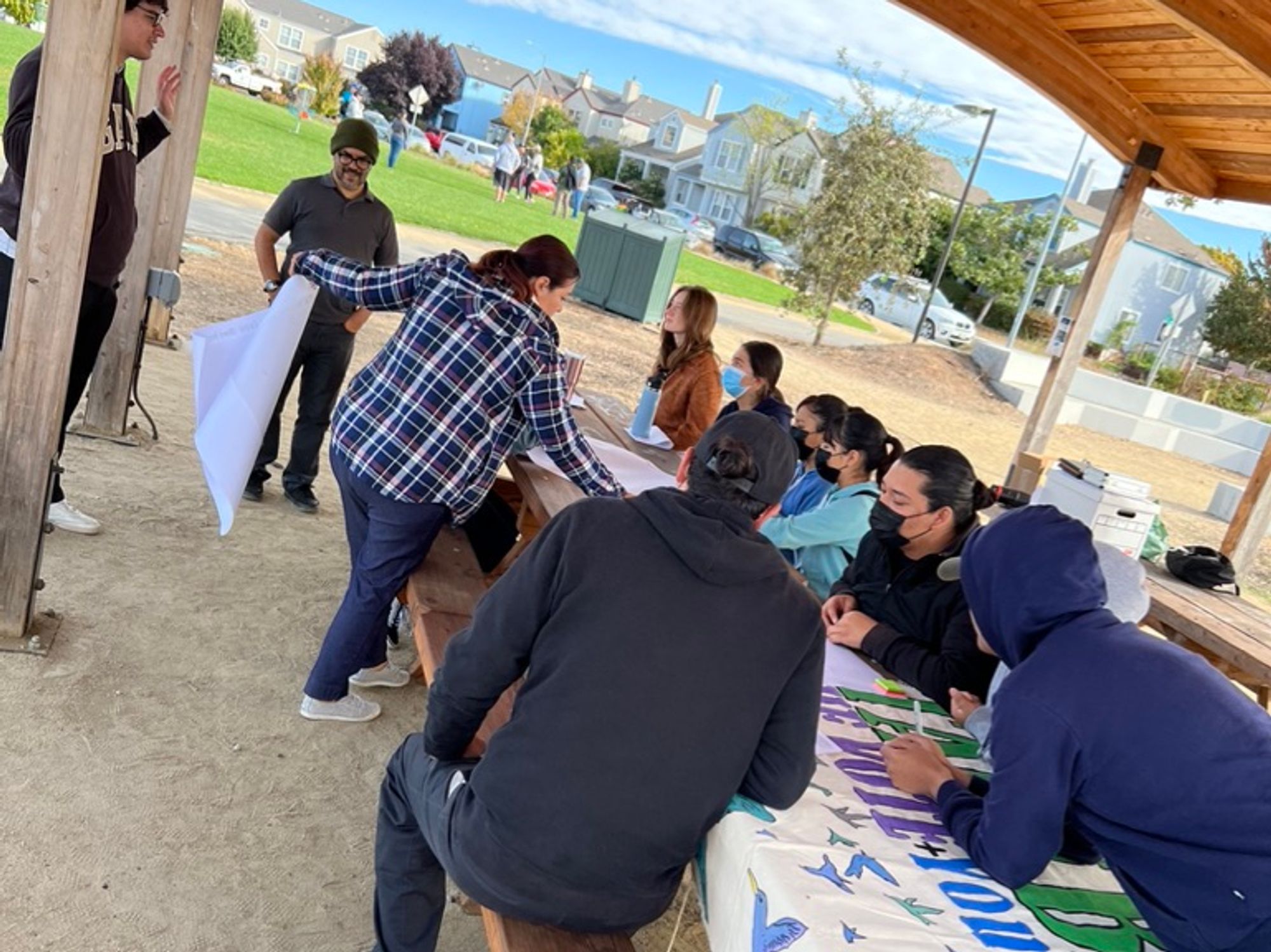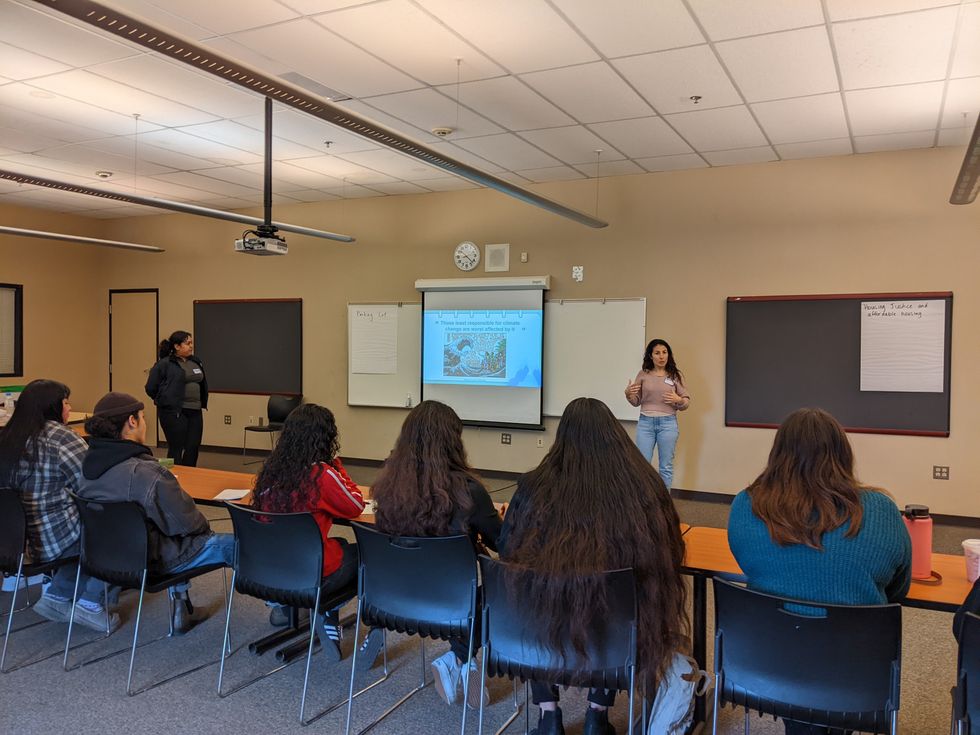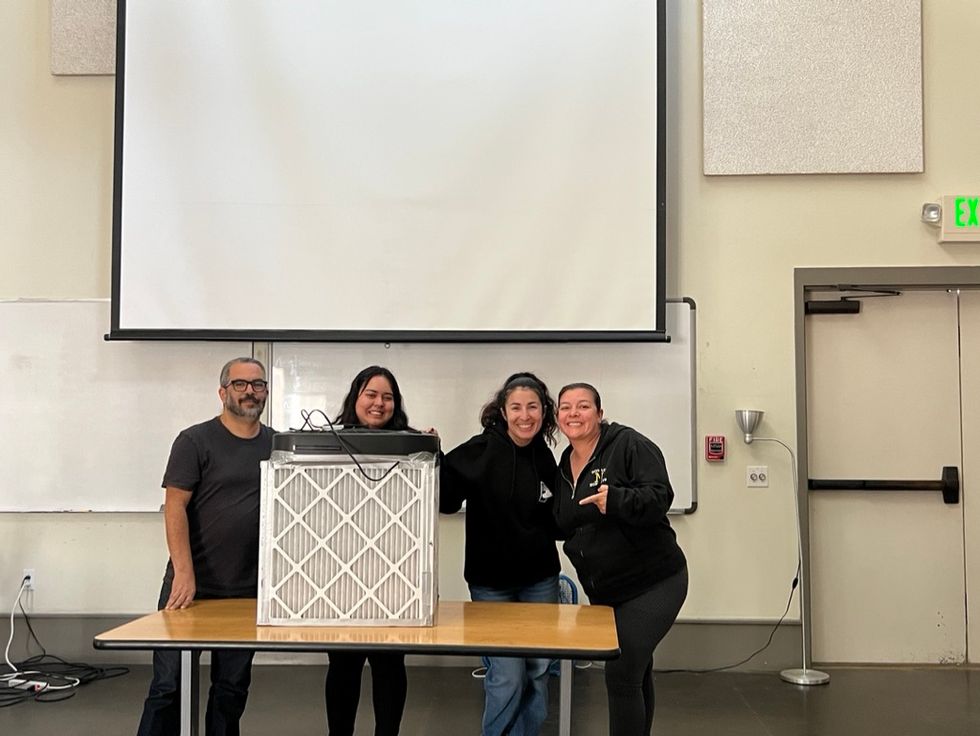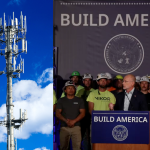
Beatrice*, an undergraduate student, would join Zoom meetings with her camera off.
She was part of a group of undergraduate researchers at Sonoma State University that Dr. Daniel Soto and I had taken under our wing. We’d trained them to collect data and facilitate workshops in which they worked with community members from nearby environmental justice communities. During this training, Beatrice was silently combating severe anxiety, which manifested in a fear of public speaking that would show up during our meetings, workshops and even those Zoom calls where we organized the Latinx Youth EJ Council – a collective of around 30 youth-activists recruited from the Latinx Student Congress of the North Bay Organizing Project.
To read a version of this story in Spanish click here. Haz clic aquí para leer este reportaje en español.
The Latinx Youth EJ Council’s first in-person meeting was a sobering reminder of the power of Latinx-led environmental justice coalition building. I watched the same Beatrice who struggled in virtual meetings go off script to talk about housing injustice in Sonoma County. And although she might not ever admit to the power within that moment, it inspired the youth to bring up their concerns – asthma, weird smells and the inhumane conditions their parents face at work. Dr. Soto and I were both overcome by the enormity of this moment. Our team, all of whom that day were Latinx, was serving a room full of Latinx youth, in partnership with young Latinx leaders and educators. All of our radical reimagining of how academic institutions can serve communities was unfolding before our eyes.
And yet, most of our work at Partners for Equity and Research (the name of our environmental justice hub at Sonoma State University) has been done free of charge. Dr. Soto doesn’t do this because it helps his career; and I do not get paid for any of the meetings I attend or workshops I facilitate and plan. We do this because this work needs to be done. And we know that we are well-equipped to support the young activists who are eager to fight for a cleaner and healthier community, not only with knowledge, but a deep understanding of their situation, as we too grew up in communities overburdened with pollution. This understanding makes us a collection of people with a desire for change, who utilize education and research for community liberation.
But funding opportunities and policies are as unjust as the system they are trying to address. Grants are overwhelmingly funneled away from organizations like ours and toward white-led non-profits. And minority-serving institutions like Sonoma State University – which serves Hispanic students – are underfunded, all while colorblind policies in academia grow. I believe if we prioritize institutions and researchers that truly serve the communities they belong to, we have an opportunity to shift the power imbalance and get this right.
Racist funding structures
In 2023, Dorceta Taylor led a study that found less than 10% of general support funding is awarded to organizations serving communities of color, whereas 80% of general support funds were awarded to white-led nonprofits. These results reflect my non-profit’s experience. We continue to see that funding agencies deprioritize funding minority serving institutions, like Sonoma State University. One report found that foundational funding is 178 times less likely to end up in Historically Black Colleges and Universities compared to Ivy League schools.
This disparity is now permeating environmental justice research and advocacy. As money funneled into the space is increasing, in part thanks to federal initiatives like the White House’s Justice40 Initiative, I’ve seen how white-led non profits, who were once sustainability focused, are now co-opting the movement – and the dollars coming in, despite their lack of expertise in environmental justice work.
Co-opting of POC-led movements

Growing up in Pittsburg, California, and later Antioch, I was in close proximity to the Dow Chemical Company (now Corteva Agriscience), which illegally released cancer-causing chemicals like arsenic, chromium and mercury into the air by illegally burning them in furnaces. It also mismanaged hazardous chemicals like tetrachloride, tetrachloroethylene and chloroform in already over-polluted low-income areas like my neighborhood.
While evidence shows that living close to hazardous waste is associated with autoimmune disease, I will never have the answer to whether or not growing up close to Dow Chemical Company is to blame for my two auto-immune chronic health conditions. What I do know is that several of my community members also suffer from health problems that will be with our bodies until we die. I wake up every morning, slow to move, because my arthritis dictates the pace with which I can go – it is a daily reminder of the severity of these environmental injustices.
So it was a shock when in 2014, while teaching high school AP Environmental Sciences, I learned that the curriculum did not have any required environmental justice content. The fact that experiences like those of my community were not acknowledged in the classroom fueled me to push for environmental justice content for my students.
I began leading workshops around the country. When I was selected to be a Science Friday Educator Collaborator, I pushed the organization to publish my environmental justice curriculum, despite them not having explicit environmental justice pieces on their program. I became the first guest to talk about environmental justice on their nationally syndicated show.
Given my new notoriety, I was accepted onto the Teaching and Learning Committee for a California statewide environmental justice and climate educational initiative supported by both the CSU and UC system. I quickly realized that there were committee members who admitted to having little expertise in environmental justice, but saw this as an opportunity to advance their careers or to enter into this new space. I raised concerns that the committee lacked the necessary representation of Brown and Black members, but this concern wasn’t meaningfully addressed. Instead of doing their homework, and building a team that was representative of those of us who are leading the movement on the ground, they chose to centralize “sustainability” organizations that were now shifting towards social justice despite lacking POC leadership or social justice expertise; and they prioritized academics that, in my view, peripheralize and erase folks of color.
I should not have been as surprised as I was when the director of this climate and environmental justice education initiative emailed me directly asking me to share my published environmental justice curriculum, which I did. I left the committee shortly thereafter due to the issues I’d raised repeatedly. So I was shocked to find that they created a guide using the same database I’d used, with a workflow and scaffolding that mirrored the EJ curriculum that I had shared with the director. I can’t say for sure that they copied my work, but at the least, this guide’s structure reflected my own. To me, it was obvious they’d recreated work I had already created and erased my contributions, a Chicana EJ activist, with a track record of serving frontline EJ communities and leadership in EJ education and curricular development. In my view, this is a textbook example of academic POC erasure.
This is a tired routine: historically, our music, our food and our dance are welcomed, but our experiences and our minds – the root of these innovations – are not. The reflex of outsider and white academics to co-opt movements created by communities of color, erases us.
Unsurprisingly, that was not the only time I’ve been erased professionally.
I recently submitted a proposal for an institutional “Social Impact Innovation Grant” designed for students to identify public health challenges and create solutions that engage directly with impacted communities. My grant proposal would support a Latinx Youth Environmental Justice Council. I learned that the grant prohibited submissions to the Institutional Review Board (which would ensure the project wasn’t violating any human rights), compensation of student labor and prohibited grantees from publishing any work that resulted from this funding.
By stipulating that community interventions “should not constitute research” and “should not be IRB approved,” this white-led program that lacked community representation would leave the communities that their awardees work with unprotected by any ethical oversight. While Institutional Review Boards have their own problematic history within Black and Brown communities, they can also sometimes be the only institutional line of defense against attempted unethical community interventions. Beyond that, the grant restrictions promote oppressive labor practices and were built on the belief that a member of a frontline community could not also be an academic at an elite institution. When funding sources that support EJ programs are not led by the community, the rules these outsider funders create, whether well intentioned or not, will inevitably be oppressive.
I withdrew my application after being selected as a finalist and expressed my concerns to the funder and the administration. I was assured that my concerns would be taken seriously, only to see the same call for proposals with the same stipulations the following funding cycle.
I have attempted to bring my community-academic framework into “elite” institutions that claim to foster “health equity and social justice for all.” My commitment is with families that, like my parents back when I was a kid, are just trying to survive their day-to-day lives without worrying about the air their children breathe. However, I’ve seen colleagues leaving these communities behind and prioritizing their academic advancement. These experiences reaffirm that we, communities, are disposable unless career-advancing research dollars are attached.
Threats to anti-racist funding structures and procedures
This tendency of predominantly white researchers to hoard resources and advance ideas that start in communities without recognizing them, creates the need for targeted funding of Black and Latinx researchers and minority-serving institutions. My non-profit, the Educator Collective for Environmental Justice is a collective of educators, researchers and youth within frontline communities that take non-hierarchical and justice-centered action to address issues of immediate health consequences. We are supported by small grants from funders such as Justice Outside, who shift resources to, and center, Black, Indigenous and People of Color leaders.
Unfortunately, as structural racism and environmental justice issues gain visibility, programs that recognize that race and ethnicity sit at the core of the disparities we study are increasingly under attack. A clear example of this is the lawsuit against the Abundant Birth Project, which recognizes that Black maternal and infant death rates are 2.5 times higher than that of whites, and as a response, provides universal basic income to expecting Black and Pacific Islander birthing people. The lawsuit claims it is “discriminatory” to support expecting people based on race, ignoring that racism is precisely the root cause of the imbalance the policy is striving to address.
It worries me how this pendulum swing has already reached academic spaces, like Prop 209 in California and the 2023 Supreme Court decision banning the consideration of race and ethnicity in admissions practices.
What is the solution?

If researchers from privileged communities truly care about environmental and racial justice, now is the time to put into action the DEI and anti-racism training they love to post on social media and allow Brown, Black and Indigenous researchers to lead the way. This work is better handled by those of us from the communities our research serves. Academics from the outside often perpetuate harms by treating communities as alien “others,” stripping them of their full humanity. These researchers should advocate for funding the teams best equipped to serve their communities.
As an extension of this, we need more funding for minority-serving institutions which are primed to, and do, serve frontline and environmental justice communities. But real change will require creating anti-racist policies and funding criteria that prioritize community-representative institutions and organizations.
Recently, Beatrice and her family moved to my hometown. We’ve connected on our shared experience as Latinas who are first generation college goers, and also over what it is like living in Antioch. In preparation for one of our Latinx Youth EJ Council meetings, Beatrice and I built indoor air filters (Corsi-Rosenthal boxes), a health intervention that she now uses to reduce asthma symptoms linked to indoor air pollution. Often in our planning meetings, we allow ourselves to sit in this supportive community – two Latinas, impacted by air pollution in our own youth, working with youth in frontline communities who are dealing with their own pollution burdens. We have built community, space and healing within our team.
At our last Latinx Youth Environmental Justice Council meeting, we ended with a circle reflection. The young people we worked with used the tools we gave them during the workshops to reimagine what they could do to achieve what they wanted for their communities: clean air, less asthma, more resources for workshops like ours.
They then went beyond identifying their concerns and needs to expressing a strong desire to act – through community interventions, through policy briefs, through the attainment of further knowledge. Our team sat down and sat back. We knew this was their moment.
*Name has been changed to protect their identity.
This essay was produced through the Agents of Change in Environmental Justice fellowship, a partnership between Environmental Health News and Columbia University’s Mailman School of Public Health. Agents of Change empowers emerging leaders from historically excluded backgrounds in science and academia to reimagine solutions for a just and healthy planet.





